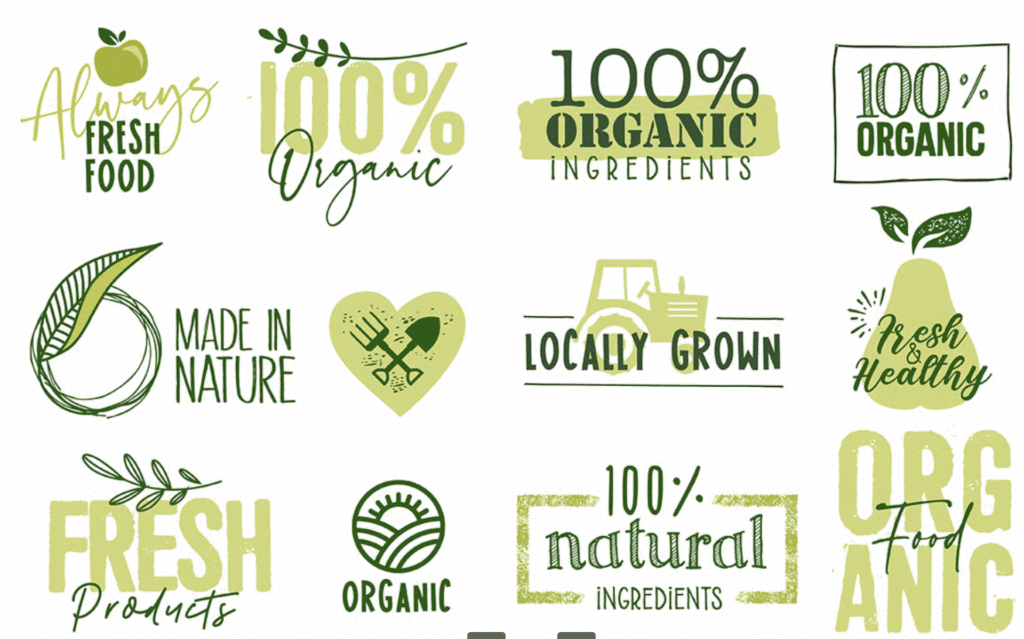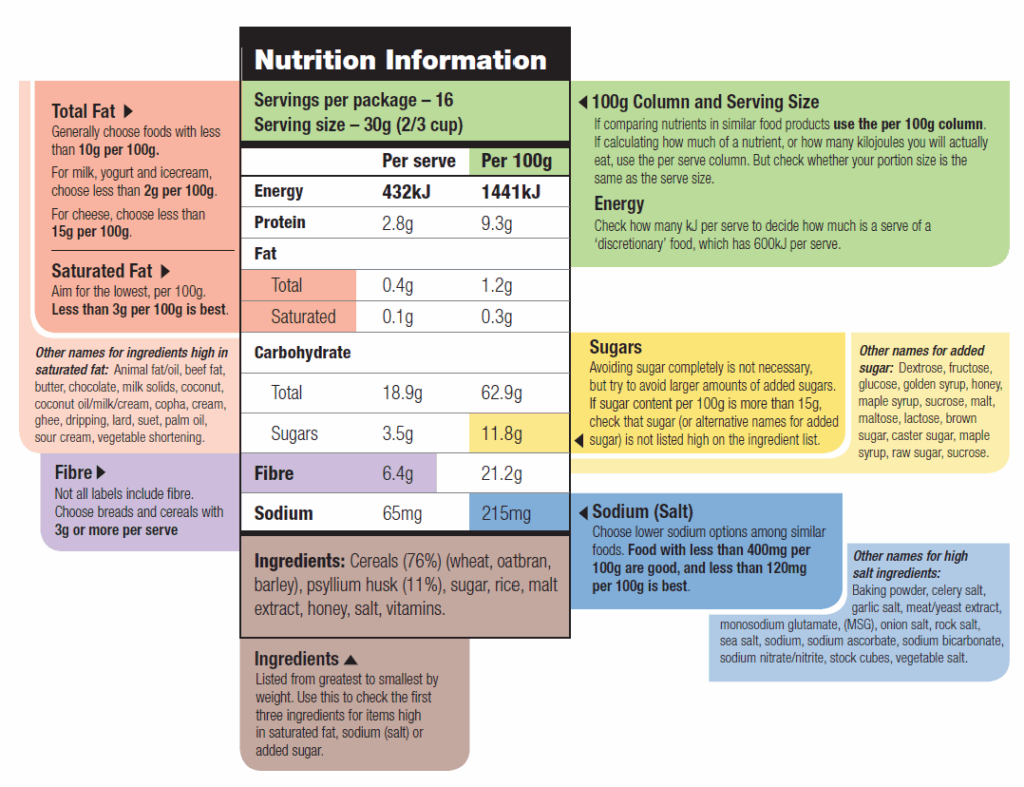Food Labels
Food labels provide us with a lot of information that can assist us with making healthier choices.
One of the quickest options is to look at the Health Star Rating. This provides a quick snapshot on a type of food, to be compared with foods of the same category. eg cereals with cereals. It indicates if a product is low or high in salt, sugar, fat, or energy (plus any nutrient of note. eg fibre), and provides a star rating out of 5. This can be great when we are busy and feel we need to make a quick choice. If we have more time we can look at the ingredient list and nutrition labels. With the ingredient list we are looking to avoid added sugars, fat and salt and to see these further down the list of ingredients. We are also looking for other possibly unhealthy foods here such as hidden trans fats.
The nutrition information panel breaks down further the actually quantities of protein, fats, carbohydrates, fibre and sodium per 100g and per serve. The per-serve amount is helpful if it matches how much you eat. It is a recommendation by the manufacturer but may not match your normal portion size. This is why comparing foods via the per 100g column may be more helpful.
When reading food labels and marketing on the front of the box it is important to understand that they may be misleading. Claims such as ‘all natural ingredients’, can still be high in sugar, fat and salt. Many products will also make health claims based on specific ingredients being present or a product being low in one ‘bad’ ingredient. For example, ‘low-fat’ does not mean low in calories, and ‘antioxidant rich’, may still also be high in sugar and/or fat. This also does not make it a healthy choice which is why it is a good idea to learn how to read ingredient lists and nutrition information.
Sometimes ingredients are listed under names we may not recognise as fats, sugars or salts. It is a good idea to familiaries yourself with some of these so that when you look at labels it is easier to recognise them. For example fats may be hidden in ingredients such as copha, coconut, milk solids, or ghee. Sugar may be listed as dextrose, or lactose. Salt has many names including MSG, yeast extract and baking powder.
top tips for food labels
- Use the health star rating as a quick option to make food choices.
- Sugars and fats have many names – learn them when you have time.
- Watch out for marketing hype – eg superfoods
- The ingredients list orders food by quantity in the product. Watch out for sugars near the top of this list as this indicates high sugar items.
- Consider what your actual portion size is. It may not be the same as the serving size on the pack, which may mean you are eating fewer or greater of the nutrients and energy listed.

marketing hype
Food companies use marketing terminology to get you to purchase their product. Often this is by way of health claims or buzz words which may lead you to think a product is better than another especially when it comes to health.
There are some products that will claim their keto status or low sugar status when they infact have far more carbs than an equivalent product. Barbeque sauce is a great example of this.
Here are some examples of marketing terms and what they mean:
High protein, low fat, etc and other health declarations
These statements can be misleading and do not automatically mean a food is healthy for you. There can be other ingredients which make the food high calorie like added sugars.
Natural
Again a term does not necessarily equate to health. After all honey is natural, and so is cream. Beef is natural, but too much is not adviseable
Whole foods
The idea behind whole food is good as it indicates less processed. But there is no one who regulates this term. It also can fall to the same issues as other statements as not being necessarily free of some ingredients which could be an issue for health.
Super foods
A buzz term to indicate the food may be high in some kind of nutrients. It is usually used for specific ingredients such as acai, goji berries to make out like it will give you a lot of benefit. However many other regular foods such as broccoli contain many nutrients. They are healthy but the rest of the diet should not be ignored.
Organic Foods
A food that is labelled Australian Certified Organic has gone through a process to ensure the product meets specific organic standards across the entire supply chain of the product. Organic produce is produced with: “No synthetic chemicals, pesticides or herbicides, Made without artificial colours or preservatives, Livestock are free to roam, No routine use of antibiotics, GM ingredients are prohibited” (https://austorganic.com/about-us/faqs/). Organic food is typically no different in it’s macro-nutritional values compared to conventionally produced food but studies have found that they are typically higher in antioxidants, contain higher omega 3’s in dairy products, and better fatty lipid profiles in meat. Their main claim is what they are free from, including pesticides, fertilizers and antibiotics, which may cause a range of issues from endocrine disruption, antibiotic resistant bacterial infections and neurological concerns. There is some evidence that an organic diet may be beneficial to reducing the incidence of metabolic syndrome, high BMI, non-Hodgkin lymphoma, infertility, birth defects, allergic sensitisation, otitis media and pre-eclampsia. though further research is recommended. (source: https://pmc.ncbi.nlm.nih.gov/articles/PMC7019963/ ; https://austorganic.com/about-us/faqs/)
